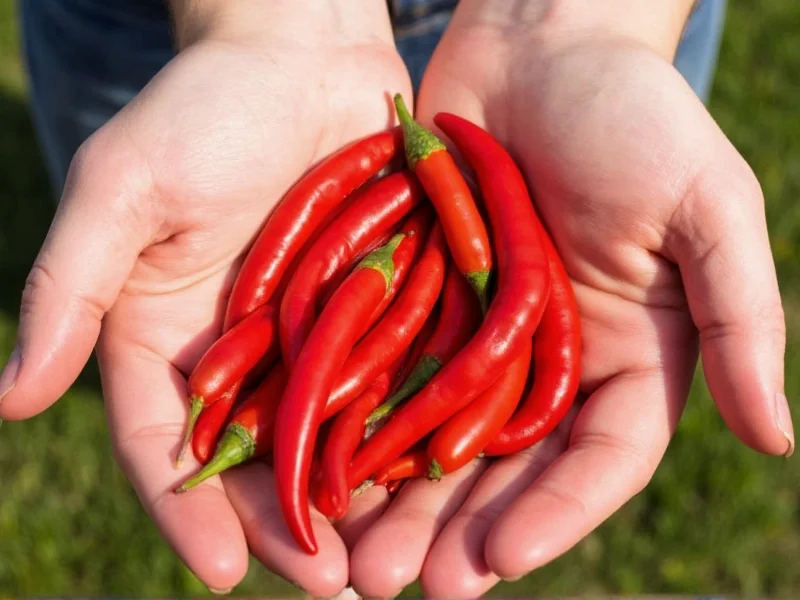When you've handled chili peppers, the burning sensation on your hands comes from capsaicin, the oily compound responsible for their heat. This substance doesn't dissolve in water alone, which is why rinsing with water often makes the burning worse—especially if you use hot water, which opens pores and spreads the oil deeper into your skin. The most effective approach combines immediate action with understanding how capsaicin interacts with your skin.
Why Water Alone Doesn't Work
Capsaicin is hydrophobic, meaning it repels water. When you wash chili residue with water, you're essentially spreading the oil around rather than removing it. Hot water exacerbates the problem by increasing blood flow to the area and opening pores, allowing more capsaicin to penetrate. This explains why many people report the burning sensation intensifying after washing hands with warm water—a common mistake when dealing with how to get rid of chili burn on hands.
Most Effective Methods for Removing Chili Oil
Successful removal requires breaking down the oily capsaicin compound. Here are scientifically supported approaches, ranked by effectiveness:
| Method | How It Works | Time to Relief |
|---|---|---|
| Oil-based cleansing | Dissolves capsaicin ("like dissolves like") | 2-5 minutes |
| Dairy application | Casein protein binds to capsaicin | Immediate |
| Vinegar soak | Acid neutralizes alkaline capsaicin | 5-10 minutes |
| Baking soda paste | Mild abrasive breaks down oil | 10-15 minutes |
Step-by-Step Oil Method (Most Effective)
- Wash hands immediately with cold water and soap (hot water spreads capsaicin)
- Dry hands thoroughly with paper towel
- Apply vegetable oil, olive oil, or rubbing alcohol to affected areas
- Gently rub for 30-60 seconds to dissolve capsaicin
- Wash again with soap and cold water
- Repeat if necessary until burning subsides
Dairy Products for Immediate Relief
For instant burning relief from chili on hands, submerge affected areas in milk, yogurt, or sour cream. The casein protein in dairy binds to capsaicin molecules and washes them away. Whole milk works better than skim due to higher fat content. Soak for 2-3 minutes for noticeable improvement when addressing how to stop hands from burning after handling jalapeños.
Avoid These Common Mistakes
- Using hot water—spreads capsaicin and increases absorption
- Rubbing with bare hands—transfers oil to other body parts (especially dangerous near eyes)
- Using butter—contains water that can trap capsaicin against skin
- Waiting too long—early intervention prevents deeper penetration
Preventing Chili Burns During Food Preparation
The best approach for how to keep hands from burning when cutting hot peppers is prevention. Always wear nitrile gloves (latex doesn't block capsaicin effectively) when handling extremely hot varieties like habaneros or ghost peppers. If you prefer not to wear gloves, apply a thin layer of cooking oil to hands before handling chilies—the added oil creates a temporary barrier.
When removing seeds and membranes (where most capsaicin concentrates), work in a well-ventilated area as airborne particles can cause respiratory irritation. Never touch your face during preparation, and keep a bowl of milk nearby for emergency relief if you accidentally transfer capsaicin to sensitive areas.
When to Seek Medical Attention
Most chili burns resolve within 24-48 hours with proper treatment. However, consult a healthcare provider if you experience:
- Severe blistering or skin damage
- Persistent burning after 48 hours of proper treatment
- Accidental exposure to eyes or mucous membranes
- Signs of infection (increased redness, swelling, pus)
For eye exposure, flush immediately with saline solution or cool water for 15 minutes and seek medical attention—do not rub eyes as this worsens damage.
Long-Term Protection for Frequent Handlers
If you regularly work with hot peppers (such as in culinary professions or gardening), consider building mild tolerance through gradual exposure. Start with milder peppers and work upward, always using proper hand protection. Some chili growers use specialized barrier creams containing nitrile compounds that block capsaicin absorption without the bulk of gloves.











 浙公网安备
33010002000092号
浙公网安备
33010002000092号 浙B2-20120091-4
浙B2-20120091-4